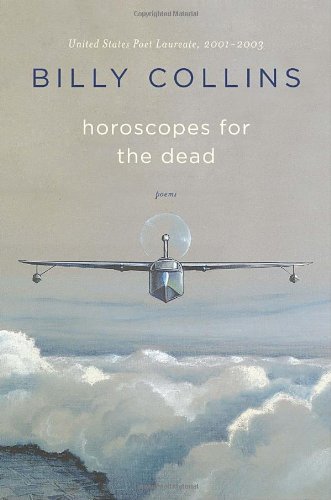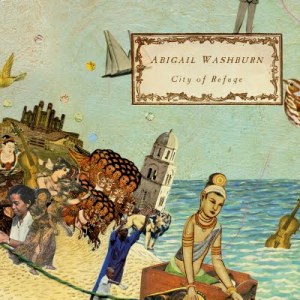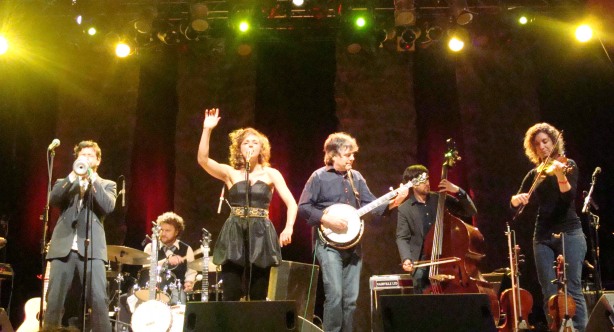
I’ll start by saying that, yes, I’m one of “those people.” The die-hard, dyed-in-the-wool, do-or-die, etc. fans of a colossal meme that permeates all of sci-fi/fantasy (and broader) society, like Star Wars, Star Trek, The Matrix, or – wait, there really is no other franchise that comes close to what I’m talking about.
I have read The Lord of the Rings trilogy about 25 times. I have not kept meticulous track of that number, but I know that I read these books once a year from the time I was 15 until I was 35 or so, and then about once every other year since then, which makes it – about – 25 times total.
I have very few, if any, friends that have read it that often, and lots of people have said, simply, “Why?”
It’s hard to explain, but I’ll try.
Reading it, it feels BIG. It feels real. It feels like it was researched and documented and told by the fire for the last 3,000 years. It feels, in many ways, like reading stories from the Bible – not the Bible itself (more on that strange possibility later. . .) but like reading dramatized versions of stories told so often, and so well, that they’ve become part of some lost culture’s backbone.
There’s a reason it feels that way when you read these books, and, yes, even when you see these movies.
Tolkien was a fierce world builder.
Apocryphal or not, legend has it that John Ronald Reuel Tolkien was so taken with the languages and legends of old Anglo-Saxon and Norse mythology that he created, from scratch, his own slightly similar languages. Several of them, in fact, complete with conjugations, syntax, and – crucially – the changes brought about by the histories of the people who spoke and wrote such languages.
Once these languages were nearly whole, he needed to flesh out those histories as a way of explaining how they evolved over the centuries. What could have happened to these tribes, these cultures, to make these dialects split off of the main trunk and create the branches that he so painstakingly, so lovingly crafted?
Thus Middle-earth was born.
Reading the main trilogy year after year might get boring, or might not offer any new insights, you may think. I’ve found the opposite to be true. Each time I read them, I thought, the story was slightly different, had more and varied things to offer, whole sections that took on new and different meaning from the last reading.
It wasn’t until I was well into my 30’s that I realized that – obviously – it wasn’t the story that was different each time I picked up those weighty tomes.
It was me.
The way I approach the various aspects of the tale definitely differs as I get older. The 15-year old me couldn’t wait for the battles to get underway, hated the jumps back and forth to Frodo’s and Sam’s parts of the story (and truth be told, I still get kind of crazy when we leave the rest of the gang hanging and jump to “Death March through Mordor,” but I think it’s slightly less maddening than it was back then.)
Reading it as a kid and then doing so now that I have kids of my own are completely different perspectives, and only one of the variables that make re-reading this endlessly layered narrative just as fresh and exciting now as it was when I first turned the pages.
So, I’ve read the trilogy 25 times – how about its “prequel,” written in tandem but published much later, The Silmarillion? How many times has that one succumbed? Exactly twice.
I tried – and tried, and tried, and tried – to read that one when I was first discovering Tolkien. “I loved LOTR, right? Gotta be the same for The Silmarillion – can’t wait. . .”
Only it was nothing like the trilogy. At the time, it WAS like reading the Bible, or worse, reading a history of the Bible. Still felt very real, exceedingly well thought out and researched and logically intact, but it was hopelessly bogged down by names – place names, people’s names, multiple names for each – and the delivery style was 180 degrees different from the style of LOTR. There was no way I could slog through it, even though (comparatively) it was not that thick of a book.
So the teenaged me gave up on The Silmarillion.
Fast-forward to 2010.
By happy accident – I’m not sure exactly what led to the find – I stumbled onto the Tolkien Professor, aka Corey Olsen, a true professor at Washington College who teaches medieval studies and, surprise surprise, an entire college course on all of Tolkien’s works. And (super bonus) when I found out about him he was just getting ready to start that semester’s Tolkien course, AND he was podcasting every single class.
I can say without equivocation that if I had not had those classes and their rigorous reading schedule, chapter by chapter, I would never have gotten through The Silmarillion. Hearing the give-and-take between the teacher and his students, and learning about the common themes in almost all of Tolkein’s stories, their histories and his, made The Silmarillion and even the trilogy itself come alive for me in ways I did not think possible.
Simply put, and it’s really anything but simple, The Silmarillion is the history of the Elves in Middle-earth, as told through the generations by the Elves (and so somewhat biased,) and as compiled by Bilbo Baggins while in “retirement” at Rivendell, thinking that his part in the greater tale is complete. The so-called “Red Book of Westmarch,” which tells the tale that Bilbo started, Frodo took over, and Sam ultimately completed, was The Downfall of the Lord of the Rings, or the trilogy we all know and love. Bilbo also wrote three other volumes, Tolkien says, while at Rivendell, which he called “Translations from the Elvish,” and which became The Silmarillion.
Learning this, I began to see (even more) just how brilliant and how incredibly detailed and logical Tolkien was in his creation of this world. Weaving the characters in the stories into their development and evolution was just one of the strokes of genius which helps them resonate with readers as feeling “real,” and steeped in a history that truly could have spanned thousands of years.
One brief example: Tolkien needed a way to bridge the gaps he himself created when writing The Hobbit as (he thought at the time) a standalone story, and then the “sequel” which became The Lord of the Rings. There were several of these inconsistencies, one of which was exactly how Bilbo got the Ring from Gollum.
A lesser writer may have decided to go back and edit the earlier story to fit the later one, glossing over any such inconsistencies. Tolkien, however, came up with a very subtle, very elegant solution: Bilbo told it wrong the first time around. And he did it because the Ring made him do so. That very fact was one of the first clues that Gandalf had that this pretty gold ring that Bilbo brought back from his adventures with the dwarves may indeed be the One Ring.
That extremely wordy introduction was needed in order to explain how I came to challenge myself to read not just The Silmarillion, but the entire 12+ volume set of Christopher Tolkien’s History of Middle-earth this year. I’m currently ahead of the pace, midway through volume 9, and it’s only June. Quick count: thus far I have read roughly 3,100 pages (not including the voluminous appendices and indices in each, or such recent “add-ons” as The Children of Hurin,) and I have no idea how many pages remain. Based on the average size of the volumes consumed so far, I’d say there are approximately 1,500 to 2,000 pages to go.
So how, you might ask, can anyone write (or anyone want to READ) this much about a story which was actually told using about 1,500 pages (Hobbit and LOTR combined) to begin with?
Because the stories are so incredibly rich in detail, so very deep in background, and so lovingly structured, written and re-written.
JRR Tolkien’s son Christopher has taken all of the surviving notes, drawings and scribblings that his father kept from the 1920’s through the 1950’s and tried to make some sort of sense of them all. No small feat, and (he readily admits) he’s not always successful at it. Later volumes often correct or expand on things he’d written when just setting out. His father’s journey from Hobbit through Lord of the Rings would take some 35+ years, all told. Christopher took around 15 years to complete the 12 volumes in the Histories.
In addition to notebooks, sketchbooks and random scraps of paper (some of which were the bits the elder Tolkien had used when working on his assigned portions of the Oxford English Dictionary, so it wasn’t unusual for Christopher to find an entry under “W” for the OED with the background of a particular story element from LOTR or The Silmarillion on its reverse,) his son relied on letters sent to him from his father during WWII. Imagine receiving such a letter when posted on an airbase during those tumultuous times, one that mentioned how the family was doing, what the weather was like, and “Oh, yes, you might find it interesting to note that Frodo and Sam are almost to Orodruin, and there’s a nasty surprise awaiting them. Didn’t see that one coming. . .”
Because of the nature and sheer volume of these volumes, there is of necessity repetition and correction – so much so that it’s sometimes hard to remember which version of the specific story being told is the “real” one, the one that made it into one of the published books. One conclusion, however, is inescapable:
The Elves – nearly all of them, no matter which splinter sect or branch – led a completely tragic existence, almost from the time they appeared in Middle-earth.
No wonder they walk so slowly and sadly, and seem so eager to take the boats into the West.
In these Histories we learn how Tolkien first envisioned the creation myth extolled in The Silmarillion; how Elves were the First People, the Children of Illuvatar; how Men came into the picture; how Dwarves and the other races and creatures appeared; and much, much more.
The story of Beren and Luthien is tackled first, and often – there are many, many versions, some complete and some not. It appears that this is one of those integral stories, though, one that resonated with Tolkien throughout his young adulthood and into his later years. Why else would he have given instructions, followed to the letter, that his tombstone would read “Beren,” and his wife’s “Luthien”?
The stories of how the Silmarils were created, the jealousy and hatred they sowed, the Kinslaying that resulted from the schism within the Elven people, the battles with Morgoth/Melkor (Sauron’s precursor and his original boss,) the coming of Men, the Rise and Fall of Numenor – each of these told of the bravery and tragedy that resulted from such events.
But crushing tragedy is not confined to the Elves in Tolkien’s world. No story that I’ve read thus far, in these Histories or anywhere else, is as tragic as that of Turin Turumbar, son of Hurin, and a man.
His story and that of his family is told in The Silmarillion, and in much greater detail in a companion book, The Children of Hurin, and the story’s genesis and additional background are spread throughout the Histories.
Briefly (ha!) it goes something like this.
When he’s still a baby, his father, Hurin, fights in The Battle of Unnumbered Tears (which tells you how that one went for the good guys,) and never returns home. His mother, pregnant with his sister, remains strong but when Turin is around 8 she sends him away to live with the semi-local Elf lords. He doesn’t want to go, but vows to return one day for her. While a guest of the Elven king, he accidentally slays one of the king’s retainers, a self-important prig who actually had it coming, and flees into the wilderness. He lives there for years until one of his best friends from the Elf king’s household tries to hunt him down to tell him everyone knows the other guy goaded Turin, all is forgiven, he can come home. The friend (Beleg Strongbow) does find him, and they form a merry band of woodland fighters dedicated to eradicating the local environs of all Orcish and other evil influences. All goes well, until Turin accidentally kills his best friend, who was actually trying to save him from the Orcs. Turin despairs, and runs further into the wilderness, convinced that he is indeed cursed.
Meanwhile, his mother and the daughter she’d been pregnant with when Turin was forced to leave them are wandering through the forest, trying to get to the Elf king’s domain. Bad things happen, and one of the last remaining dragons catches Turin’s sister and lays a spell of forgetfulness on her, so she has no idea who she is or where she’s from. She wanders through the forest some more, separated from her mother, until she comes across Turin and his band of fighters. He cares for her, they fall in love (neither knowing who the other is,) and she is soon with child.
Turin takes on the task of slaying said last dragon, and sets off to do so. All of his men cravenly abandon him at some point, leaving Turin to climb across a canyon and gut the lizard from stem to stern at the opposite rim by a raging waterfall. As it is dying, though, the dragon spies Turin’s sister, who has come to beg him not to challenge the beast alone. The dragon reverses the spell of forgetfulness, Turin’s sister remembers everything, and throws herself from the top of the waterfall. Turin then begs his sword to “drink his life,” as it has so many others, and it readily agrees. He falls on the sword and dies.
Cheery stuff, I know, but it’s told with such devotion to the form (reminiscent of Saxon or Norse tales of its kind, while still in LOTR mode,) and with such achingly beautiful but spare prose that, as crushingly sad as it is, it would be sadder to have never read it. The additional background lent by the Histories only makes it more so.
These volumes, each of them, are extremely dense with information and read like the scholarly treatises they are. They are as different from The Silmarillion as it is from The Lord of the Rings, or as different and as detailed as the LOTR is when compared to The Hobbit. Not for the faint of heart or for the casual Tolkienite, with some selective self-editing (which footnotes and appendices to dive deeper into, and which can be safely skimmed, for instance) they are a treasure-house of insight, background and knowledge, and they provide even deeper reasons for why the “main” stories have captured our attention so well, and for so long.
So far, the most interesting and compelling volumes of the Histories have been the last 4, subtitled “The History of the Lord of the Rings,” which brings them up to the time of the writing of the Trilogy. (And which adds to the confusion and further cements the entire series as more of a scholarly, academic endeavor than a commercial one: how else could you properly title and expect to sell something called, for example, Sauron Defeated, The History of Middle-Earth, volume 9; The History of Lord of the Rings, volume 4?)
That being said, if all 12 volumes seem too daunting a task, one could do worse than picking up these middle four, or the companion to The Silmarillion, The Children of Hurin; whether or not they lead to an interest in the remaining books they are, by themselves, wonders of scholarly research and compilation, and they provide even more evidence that Tolkien had no equal when it comes to world-building.
I’ll close with a piece that the Christopher used to open the History of the Lord of The Rings, volume 1 (which is actually volume 6 of the broader Histories.) It’s an excerpt from a letter his father wrote to his friend W.H Auden in June of 1955, and speaks to the sense of wonder and magic that Tolkien kept intact throughout his life.
I met a lot of things on the way that astonished me. Tom Bombadil I knew already; but I had never been to Bree. Strider sitting in the corner at the inn was a shock, and I had no more idea who he was than had Frodo. The Mines of Moria had been a mere name; and of Lothlorien no word had reached my mortal ears till I came there. Far away I knew there were the Horselords on the confines of an ancient Kingdom of Men, but Fangorn Forest was an unforeseen adventure. I had never heard of the House of Eorl nor of the Stewards of Gondor. Most disquieting of all, Saruman had never been revealed to me, and I was as mystified as Frodo at Gandalf’s failure to appear on September 22.
I’ll report back when I finish the task and the final volume is completed. . .








